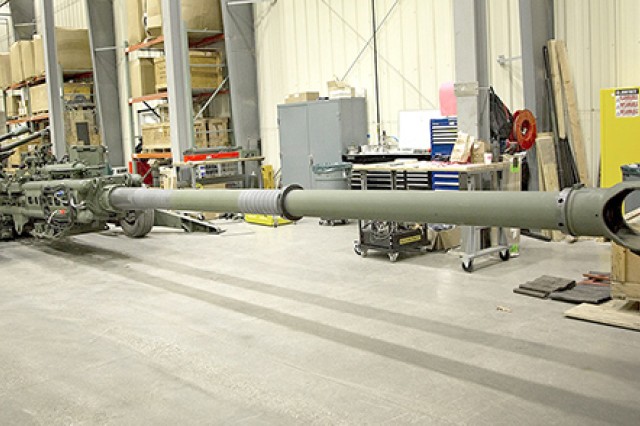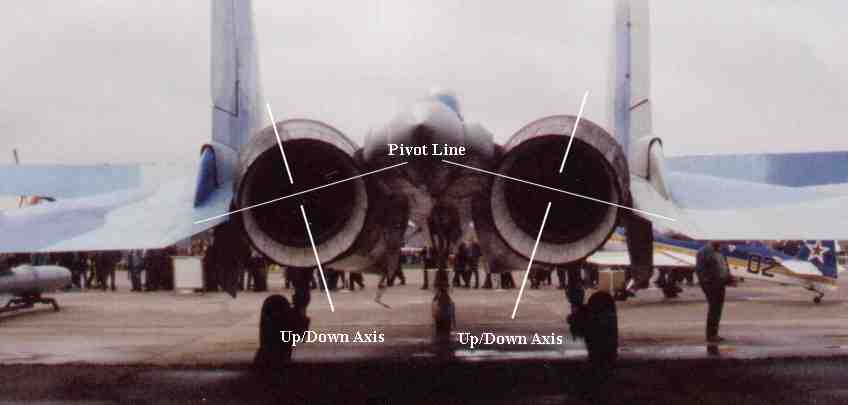The Pentagon successfully demonstrated a hypersonic glide vehicle Oct. 30, lofting an experimental payload on a rocket from Hawaii that -- during its ultra-fast, unpowered flight to the Marshall Islands across the upper reaches of the atmosphere over the Pacific Ocean -- verified technological advances relevant to a potential future U.S. military hypersonic strike system.
The event -- dubbed Flight Experiment-1 -- was a high-stakes assessment three years in the making by the Defense Department's Conventional Prompt Strike program and comes six years after the last successful U.S. military flight demonstration of a hypersonic boost-glide vehicle.
Vice Adm. Terry Benedict, head of the Navy's Strategic System Programs office, which executed the test, declared the event a “success” during remarks at a Nov. 2 Navy Submarine League Conference in Arlington, VA.
The result advances U.S. military efforts in the race against China and Russia to develop a long-range, ultra-fast missile -- a capability that, if eventually fielded, could give the president the option to strike a powerful, non-nuclear blow precisely to a target anywhere in the world within an hour.
Dyke Weatherington, principal director of space, strategic and intelligence systems in the Pentagon's acquisition directorate, which oversees the Conventional Prompt Strike program, said the flight test demonstrated technological headway.
“What I can tell you at this [unclassified] level is we matured a number of the technologies that have relevance in associating capabilities in what a warfighter might need in a future operational capability,” Weatherington told Inside Defense.
“We are assessing the results of the test,” he said during a Nov. 2 interview at the Pentagon. “Generally, I will say, we were mostly satisfied with the results.” He declined to say how fast the glider traveled or anything about its trajectory, but noted the payload took less than 30 minutes to reach its target.
“The specific flight objectives are classified, and the department is assessing the data to discern if we met those flight objectives,” Weatherington said.
Last year, however, the Office of the Secretary of Defense told lawmakers the objectives for FE-1 included a first-ever live warhead integration with hypersonic glider, demonstrating flight control software improvements, higher G-loads while maneuvering, advanced avionics, miniaturization of subsystems and improved guidance algorithms.
Did the Defense Department integrate a warhead on the hypersonic glider in FE-1?
“I have no comment,” Weatherington said.
_________
The flight began at the Sandia National Laboratories flight test pad at Pacific Missile Range Facility on Kauai. A Strategic Target System launch vehicle, similar to the system the Army began developing with Sandia National Laboratories in 1985 using refurbished Navy Polaris missile motors for its first and second stages and a commercial Orbus-1a solid rocket motor guidance and control for its third stage, was the booster for the flight test. The experimental payload sat atop in a nose cone, giving the entire ensemble a length of more than 30 feet, diameter of 54 inches and weight of 36,000 pounds.
The hypersonic boost-glide vehicle was manufactured with participation from “several different elements” of the Conventional Prompt Strike national team, Weatherington said.
The glide vehicle has an internal structure which is overlaid with a thermal protection system; the design of the latter is a team activity, according to Weatherington.
Hypersonic glide vehicles of the variety DOD is exploring travel in the atmosphere for tens of minutes, Weatherington said. “That's a long time to heat-soak a vehicle compared to a typical ballistic re-entry vehicle, which, from the time it reenters the atmosphere and hits the ground, is 20 to 30 seconds,” Weatherington said. “The thermal protection system has to be much more complex. Assessing the performance of that thermal protection system is one of the sensitive areas of this program.”
The Pentagon, with prodding from Congress, has adopted a goal to codify a Conventional Prompt Strike acquisition program of record by 2020.
The Conventional Prompt Strike program has spent $1.2 billion to date and plans to spend $1 billion over the next five years, including $201 million in fiscal year 2018.
The program focuses on demonstrating component and subsystem technology maturity with risk-reduction initiatives that culminate with flight tests. The program funds the design, development, and experimentation of boosters, payload delivery vehicles, non-nuclear warheads, thermal protection systems, guidance systems, test range modernization and mission planning and enabling capabilities, according to the Pentagon's budget.
The Conventional Prompt Strike program has two follow-on tests planned, one in 2020 and another in about 2022, Weatherington said. “We will use data collected from this flight test to refine our models and to refine what potential [concept of operations] could be for a future operational system. Then we will continue to burn down the technology risk, we'll continue to mature the technologies for capabilities the warfighter might need and it is likely we will demonstrate some of those -- not all of those -- in the next flight test.”
While plans are being drafted for a third flight test in 2022, Weatherington said those are soft. “It is difficult for me to make a prediction four years from now in a technology area -- and a threat area -- frankly that is moving this fast,” he said.
Since 2003, the Defense Department has explored a range of options for giving commanders new ways to strike high-value, time-sensitive targets -- from terrorists to weapons of mass destruction to anti-satellite weapons -- anywhere on the planet in about an hour.
In 2008, Congress quashed a Navy proposal to fund the modification of submarine-launched Trident missiles to carry conventional weapons and perform the prompt strike mission over concern that such systems, when employed, could be misconstrued for nuclear launches. Air Force plans to develop a boost-glide hypersonic weapon stalled out after the Hypersonic Test Vehicle-2 project, pursued with the Defense Advanced Research Projects Agency, resulted in test flights in 2010 and 2011 that terminated early.
In November 2011, an Army-led project notched the U.S. military's first hypersonic boost-glide success when the Advanced Hypersonic Weapon was launched from the same location in Hawaii to Kwajalein. That test, according to DOD, demonstrated the feasibility of a boost-glide end-to-end missile concept capability. It also yielded, according to Pentagon officials, valuable flight, ground, modeling, and simulation data in the areas of aerodynamics, thermal protection systems and navigation, guidance and control.
In the effort to identify a Conventional Prompt Strike capability, the Pentagon has funded two different types of ultra-fast missile technology development: hypersonic glide vehicles, which glide to their target while skimming at the top of the atmosphere, and hypersonic cruise missiles, powered during their entire flight by high-speed jet engines.
In 2012, Pentagon leaders in classified guidance directed the program to shift away from developing a hypersonic weapon with a “global” range and instead focus on a “regional” reach.
In 2013, the Joint Requirements Oversight Council directed in a classified memorandum that the Conventional Prompt Strike program focus on demonstrating the feasibility of hypersonic boost-glide for a potential intermediate-range strike system independent of service as well as basing or launch platform, according to DOD.
In October 2013, the Conventional Prompt Strike program conducted a key high-speed ground test of a new warhead developed by Lawrence Livermore National Laboratory, replicating flight conditions of the prototype Kinetic Energy Projectile mounted on a sled and propelled at speeds greater than three times the speed of sound.
In 2014, the Conventional Prompt Strike program attempted a second launch of the AHW, seeking to demonstrate a 5,400-nautical-mile flight from the Kodiak Launch Complex in Alaska to Kwajalein Atoll, but a booster rocket experienced an anomaly after liftoff and caused authorities to terminate the flight for safety reasons.
Following that setback, the Office of the Secretary of Defense tapped the Navy to conduct the next test flight of a candidate Conventional Prompt Global Strike capability -- the just-completed FE-1. The service was tasked with modifying the Army-developed Advanced Hypersonic Weapon by scaling it down as a first step toward shrinking it further to eventually launch from a ship, including a submarine.
“The flight vehicle was reduced in size from the 2014 test,” Weatherington said. “The direction of the program three years ago was to maintain basing options -- but include potential maritime options as one basing consideration. Maritime basing options are generally more volume constrained than land-based options might be. So, there was work to reduce the size of the hyper glide vehicle.”
The recent U.S. hypersonic success comes as China and Russia are, according to press reports, actively working to develop a similar ultra-fast weapon, conducting as many as four flight tests a year of the DF-FZ and 3K22 Tsirkon systems respectively.
While the Conventional Prompt Strike program conducts flight tests less frequently, the Defense Department maintains its approach to mature hypersonic technologies is sound, utilizing what it calls a “synergistic combination” of modeling and simulation, ground testing and flight testing with the goal of building a formal acquisition program in the near future.
The Conventional Prompt Strike program, according to DOD, has taken a deliberate approach to technology maturation by relying on the strong ground test and modeling capabilities of the United States. This approach has allowed the department to acquire data at significantly less cost than flight testing, according to DOD.
As DOD reduces risk with the hypersonic glide vehicle, it is now beginning to focus on a potential new booster dedicated to launching such payloads.
In October, the Navy locked in requirements for a very-high-speed missile that could provide a key component for a potential prototype Conventional Prompt Strike capability and launched a competition to design, build and ground-test a booster capable of delivering a hypersonic glide body payload.
“A more purpose-built booster would allow an operational capability to be delivered,” Weatherington said, noting the Pentagon has not made a decision to develop a hypersonic strike acquisition program.
In a related effort, the Navy's SSP office has retained Lockheed Martin and Raytheon since 2014 to draft technical proposals for an offensive hypersonic weapon as part of an ongoing analysis of alternatives for a conventional prompt strike capability DOD aims to codify in a program of record by 2020.
____















